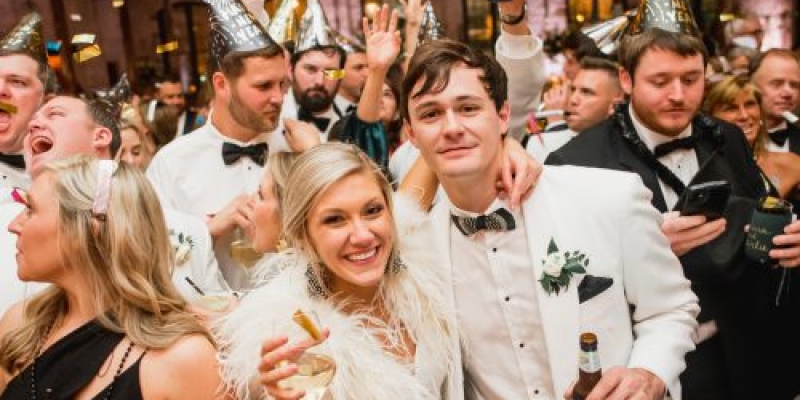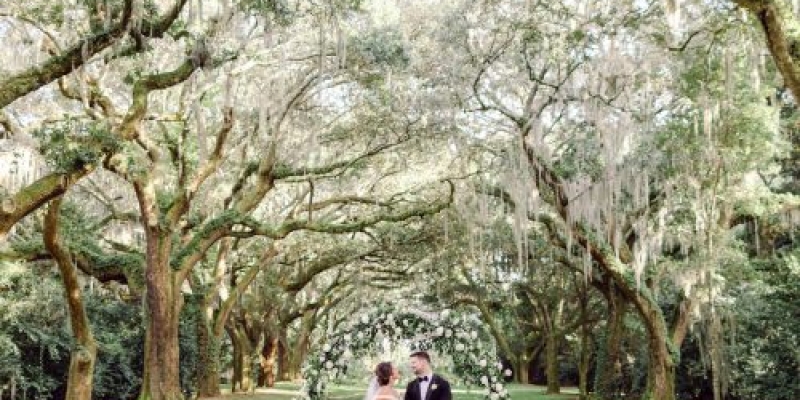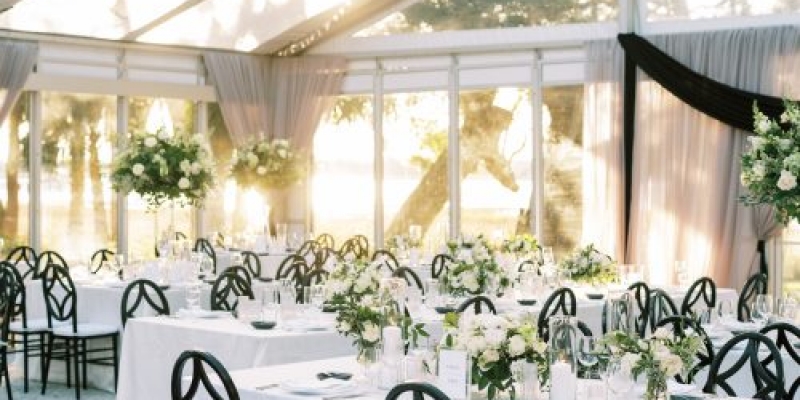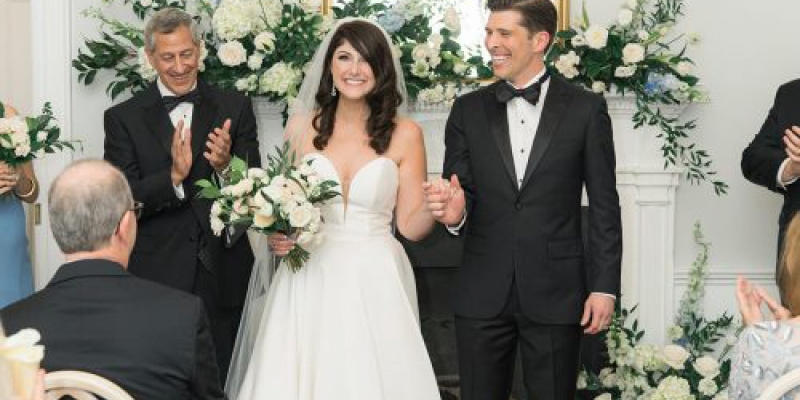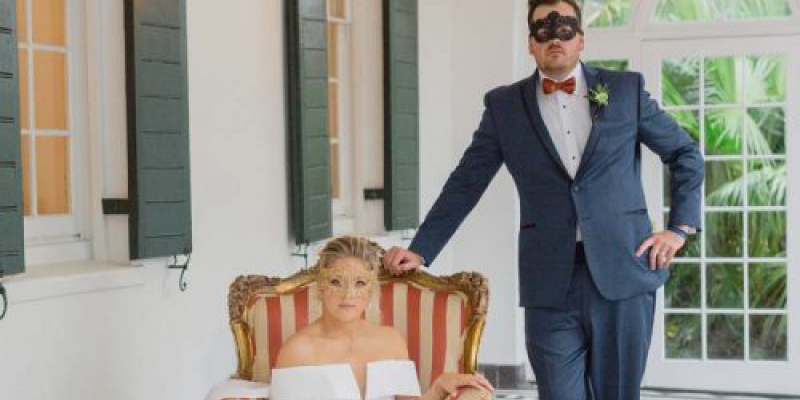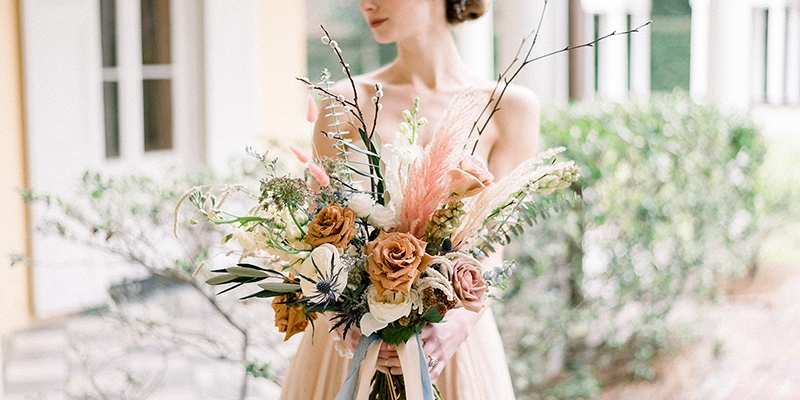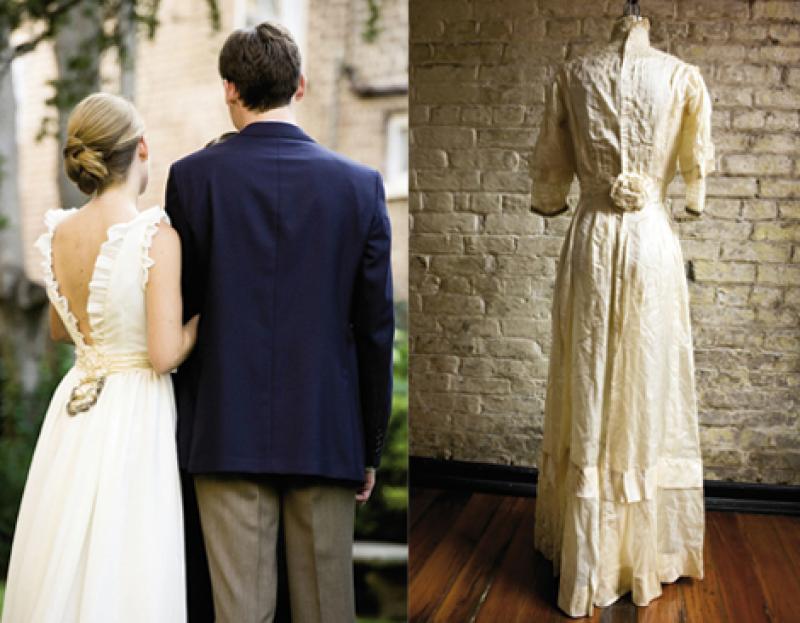
(left) TAKE THE PLUNGE: The bride saw a low-cut frock in Lucinda Eden and asked the designer if she could rotate it for a more demure gown. Lucinda agreed and the new silhouette was accented with repurposed elements like this waist embellishment (the bride’s favorite detail).
(right) PAST PERFECT: Though the silk gown, which debuted in Alton, Illinois, in July 1911, was disintegrating, some decorative elements were salvageable, like strips of satin with French knots, rickrack, and a handful of silk rosettes.
When Big Day planning began for Betsy Shackelford, she was without idea, mental image, or inspiration for her dream dress. But after laying eyes on her great grandmother’s 1911 wedding gown and consulting with Lowcountry designer Lucinda Robinson (crowned the South’s best new designer in 2011 by Southern Living), a vision quickly formed. For starters, she asked Lucinda if it were possible to convert one of her existing designs into a more modest dress by rotating the plunging neckline to the back. Lucinda agreed, then incorporated pieces from the century-old frock—lace here, a satin rose there. When Betsy walked down the aisle to meet husband Chappell months later, it was, as Betsy’s great aunt Ruth put it, not in a traditional dress, but “a dress made of tradition.”
SEW SMART TIPS FROM LUCINDA
Make it matter. Lucinda suggests repurposing only gowns that carry a special sentiment or personal story.
Get inspired. Whether it be a small lace detail or the entire silhouette, redesigned pieces can draw inspiration from a
specific element or the whole ensemble.
Plan ahead. Recasting a gown takes more time than buying or ordering off the rack. Lucinda suggests setting aside at least three months.
Don’t stress. Be flexible and expect design changes throughout production. “The end product’s always better than the original sketch!” Lucinda adds.
Be YOUnique. Lucinda says reworking vintage wedding wear suits “any woman who doesn’t want a gown that’s been seen on the runway or in a local store.”

